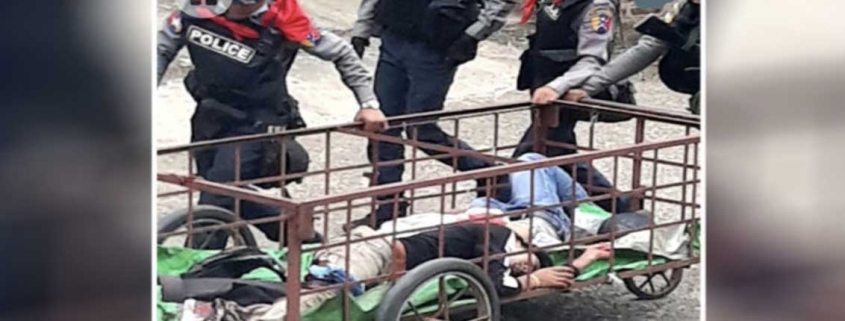Myanmar Regime Disputes Protest-Related Death Toll Compiled by AAPP
After being accused of inflating the fatality lists, the Assistance Association for Political Prisoners (AAPP) said it can totally guarantee the death toll it has documented.
AAPP, a human rights organization founded in 2000, has been documenting the fatalities and arrests at the hands of the military regime’s forces following the Feb. 1coup.
Citing the records of its police force, the military regime said via state-owned television and newspapers on Monday and Tuesday that only 258 people were killed between Feb. 1 and April. 15.
Meanwhile, the AAPP announced that a total of 726 people have been killed by the junta.
The junta also maintained that of its total of 258, 247 were killed during counter-attacks by the regime’s forces when they were assaulted while removing roadblocks.
The other 11 died under different circumstances, the regime said.
The military regime also denied responsibility for the death of 20-year-old high school student Ma Mya Thwet Thwet Khine, who was hit with a live bullet in Naypyitaw on Feb. 10, when riot police dispersed protesters.
It also denied responsibility for killing a 19-year-old girl, Kyal Sin, who was shot in the head during a crackdown on an anti-regime protest in Mandalay in March.
The regime said in state-run newspapers on Tuesday that both girls died because protesters were shooting at each other.
The military regime also claimed that the AAPP had listed 76 more fatalities in Bago on April 9 without having any personal information.
The regime said that only four “rioters”—the military’s euphemism for anti-regime protesters—were killed and 36 were arrested during the April 9 raids at Bago, which is 98 kilometers from Yangon.
About 4 a.m. that day, more than 250 of the military regime’s troops launched attacks on four residential wards—Shinsawpu, Hmawkan, Nantawyar and Ponnasu—which are anti-regime strongholds in Bago.
While trying to remove roadblocks erected with sandbags by the anti-regime protesters to protect the protest assembly areas, troops opened fire with automatic weapons and heavy explosives against defense team members and night watchmen guarding the areas.
Photos also show the tail of a rifle grenade and some unexploded rifle grenades found by local residents.
The junta’s troops deployed in the wards for days, and all entrances into the wards were closed with police lines. The forces continued shooting in the wards until April 11, according to a Bago resident.
The wards were deserted as no one dared to go outside, and many of residents had fled their homes.
No ambulances and social organizations giving medical assistance and free funeral services were able to go into the wards to pick up the dead or give medical treatment to the wounded.
U San Min, who is in charge of the documentation and research department of AAPP, told The Irrawaddy on Tuesday that the regime’s forces have destroyed all trace of evidence on the massacre in Bago on April 9.
However, the AAPP has received the personal information on 27 out of the 82 killed by the junta’s troops in Bago that day, he added.
AAPP also said that they are still verifying the personal information on the other 55 killed.
According to U San Min, AAPP is documenting all deaths caused by the regime’s forces during their raids, crackdowns, interrogation and shootings, verifying each case.
“We have listed the death toll thoroughly. So, the numbers will never be inflated. Actually, the numbers are believed to be higher than the recorded lists as there are many cases [in which] we don’t have information,” U San Min said.
As of Monday, nearly 740 people have been killed by the junta’s forces during their raids, crackdowns, arrested and random shooting.
Those killed are included anti-regime protesters, NLD party members, bystanders, pedestrians and civilians, said AAPP.
More than 3,200 people including elected leaders, NLD party members, election commissioners, doctors, protesters, journalists, writers, artists and civilian have been detained.
In spite of the killings and arrests, tens of thousands of people across Myanmar continue to take to the streets to protest against the military rule.



